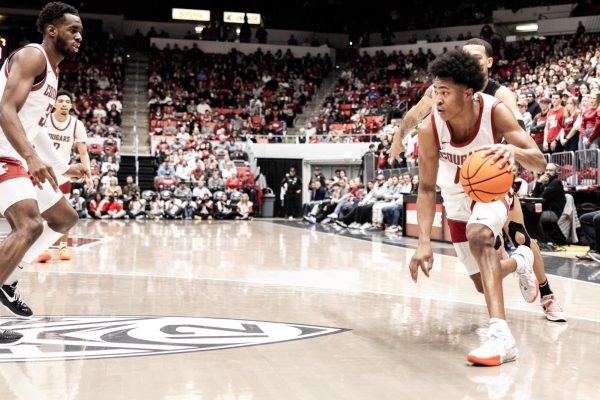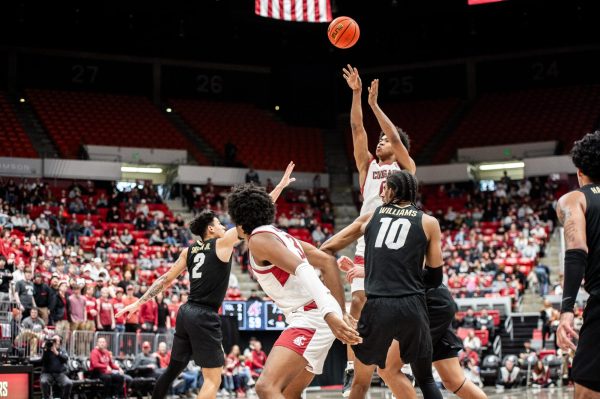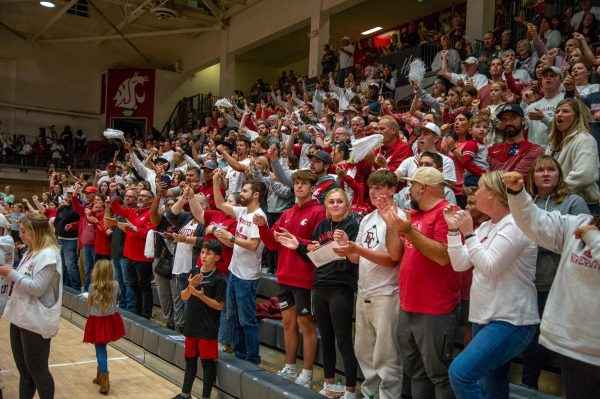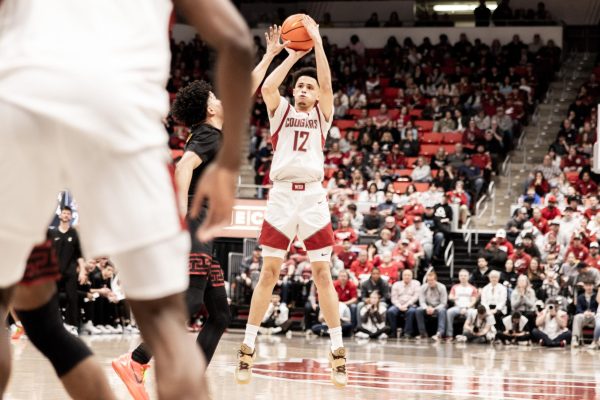How virtual reality technology may impact the stadium experience
The developments of virtual reality technology may change the in-game experience at Martin Stadium for WSU football fans in a matter of years.
November 10, 2016
Let me paint you a mental picture.
It has been 30 years since you graduated from college. You have a full-time career, a two-story house and a family of your own. One night, you get a message from some old college friends who tell you they’re going to catch a primetime WSU football game and want you to come.
How could you pass up the offer? You’re a WSU alumni, so of course you make the drive out to Pullman.
At first, it’s a little strange not sitting in the student section, but you get used to it. You and your friends enjoy catching up and watch the Cougars take down Stanford in an epic upset. However, to your amazement, following the game though you find out that the contest was not actually played at Martin Stadium.
In fact, the game was played two states away, in California.
The revolutionization of virtual reality has fused into stadiums and arenas all over the country, changing how fans can view sporting events in real-time.
Contrary to popular belief, stadiums and arenas have a bad reputation with local economies. Think of it this way: in Major League Baseball, there are 162 games played per season. Half are played at the home stadium, 81 games in total, which means the stadium is used on just 22 percent of the calendar year.
The National Football League is even worse. There are 16 games in a season with only eight being home games. Do the math, and we find that the stadium is used on 2 percent of days of the year.
Sure, your hometown team might add a couple home games in the postseason, but only 12 of the league’s 32 teams qualify.
What is going on during the rest of the year? There might be a concert or two, but for the most part it goes unused.
A stadium sitting in place for 98 percent of the year generates absolutely no revenue or societal benefit. This helps explain why Seattle did not pay off the costs of construction and demolition of the Kingdome until last year. Thirty-nine years after it opened and 16 years after it was knocked down, the Kingdome still factored into taxpayer dollars.
Ironically, this factored into Seattle citizens’ opposition to building a new arena for the Seattle SuperSonics. Why build a venue while still paying off another?
In a way, constructing a stadium or an arena compares to a 30-year contract to keep a professional sports team in its current city. The problem arises when a city cannot pay off its current stadium loan but needs a new one to avoid possible relocation of the franchise to a different city.
That’s where virtual reality comes into play.
To be fair, virtual reality is still in its beginning stages. However, Max Cohen, vice president of mobile technologies at Oculus and commissioner of a Fantasy Football league, said virtual reality is closer to coming to fruition than previously thought.
“What I might have told you was 10 years away last year is now three years away,” Cohen said. “It creates all of these emotional connections, and that’s the best thing that (virtual reality) can offer. That emotional connection you don’t get when you are just watching a TV screen.”
A lot of experts argue that while headsets that envelop virtual reality in sporting events are a unique experience, most fans prefer to sit with a huge crowd of fans at a stadium or an arena.
Take the Chicago Cubs, for example. The Cubs just won the 2016 World Series on the road in Cleveland, but imagine if Cubs fans could buy a ticket to their home stadium at Wrigley Field and watch their team play through holograms of the actual game in real time? Not only would the fans have a place to cheer together, but Wrigley Field garners revenue through virtual reality technologies.
Like the invention of the radio, television, computer and cellphone, virtual reality has the potential to be the next big technological phenomenon, and it may solve the stadium revenue problem.
A city doubles the revenue output of stadiums and arenas if the technology allows fans to watch an away game at the home stadium. It’s certainly a long shot, but certain concepts of virtual reality are already in use for the Arizona Cardinals and Dallas Cowboys, and colleges such as Texas Tech and Stanford.
When the Mercedes-Benz Stadium opens in Atlanta, Georgia, next year, it will feature the first 360-degree halo screen built into the roof.
Get ready. It’s not a matter of whether or not virtual reality will materialize. It’s a matter of when it will become a common practice in the sports industry.
















